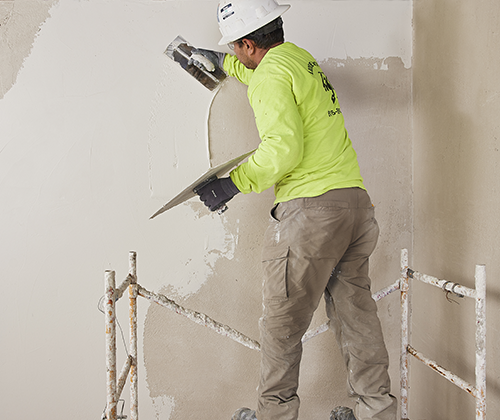Do you want a wall? Plastering tips? Are you having trouble choosing between two types plasters? Don’t worry, this article will help. Continue reading to learn more about choosing the right plaster.
You can’t go wrong when plastering walls. It is important to do the job right. This means selecting the correct type of mortar or plaster and correctly applying it. Joint compounds, also called plasters, are special materials that can be used to fill cracks in walls, floors, ceilings and other areas. Plasters are often used over drywall or another wall-covering material.
Although plasters come with a variety of textures and finishes, their main purpose is to conceal imperfections in walls and floors. These are the four factors that will help you choose the right plaster for your project: what type of surface it should cover, how much moisture it should absorb, how it looks, and the finishing options.
What is plastering?
For professionals Plastering Dry plaster is applied to a surface to give it a hard, durable, and smooth finish. This is often done to enhance the appearance of a surface, or protect it from further damage. It’s time to find out what plaster is if you’ve never heard it before.
There are many types of plasters available, depending on the application. Mixing plaster with water and sand will create a paste that sticks to the wall. To test the plaster, first prepare the area. The finished product will look like painted drywall once it dries.
There are two types of plaster: cementitious plaster and drywall compound. Both work well, but drywall compound is more effective than cementitious plaster.
- Drywall compounds are typically made of water, sand and other ingredients that flow into cracks in walls. This makes it much easier to plaster the wall and smoothen out any imperfections. They also tend to stick better to concrete, brick, and stone surfaces.
- Cementitious plasters don’t require any finishing, as they look already finished. They are however more difficult to apply and may require additional steps before drying completely. Cement plasters can shrink when they set so it is important to apply them with caution.
Cementitious plasters work best on walls made from masonry or block, such as brick, concrete blocks or stone), wood or metal studs and hawk boards. Cementitious plasters are also effective on ceilings and floors as well as countertops.
Different types of plaster
There are many types of plasters, made either from natural or synthetic products. Natural plasters are lime, cement, and Gypsum. These plasters are usually very light and porous. They also make it easy to apply. Synthetic plasters can be heavier and more difficult than traditional plaster. They don’t contain organic materials, but instead contain minerals like silica sand and calcium sulfate as well as quartzite and dolomite stones.
Synthetic plasters look brighter and cleaner, while natural plasters can appear more cozy. They may need extra care to be kept clean. Make sure your plaster is free from dust, dirt, and other debris before you buy it. This is especially important if you use limestone plasters, which can release harmful chemicals when exposed to sunlight.
How do you choose plaster?
It is easy to choose the suitable plaster for your project. First, decide if you will need plaster for exterior or interior use. Interior plasterers in Auckland use are usually lighter in weight and porous. They work well on flat surfaces. Exterior plasters work best on uneven surfaces and are heavier.
Next, you will need to decide if the plaster should be easy to spread or thick. Because of their firm texture, thicker plasters are more resistant to heavy traffic and easier to manage. Consider how much moisture the plaster must absorb.
A lighter, thinner plaster will be most suitable if you live in an area with low humidity. If your home is exposed to heavy rain or snow, you may want to choose a thicker and more durable plaster that is less susceptible to cracking.
After you have chosen a type of plaster, it is important to consider how long it takes for it to dry. Plaster takes approximately two hours to dry, and one hour to cure. Spreading multiple coats of plaster can speed up the process.
Fast-drying plasters will reduce cracking during curing and application. Once you have found the perfect plaster for your project, make sure to check the label to verify that it meets all health requirements.


